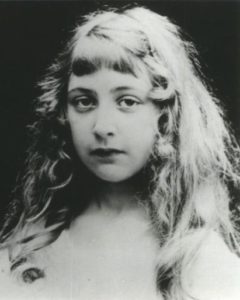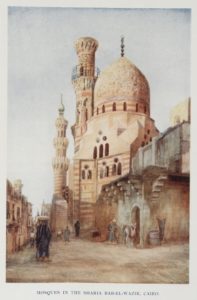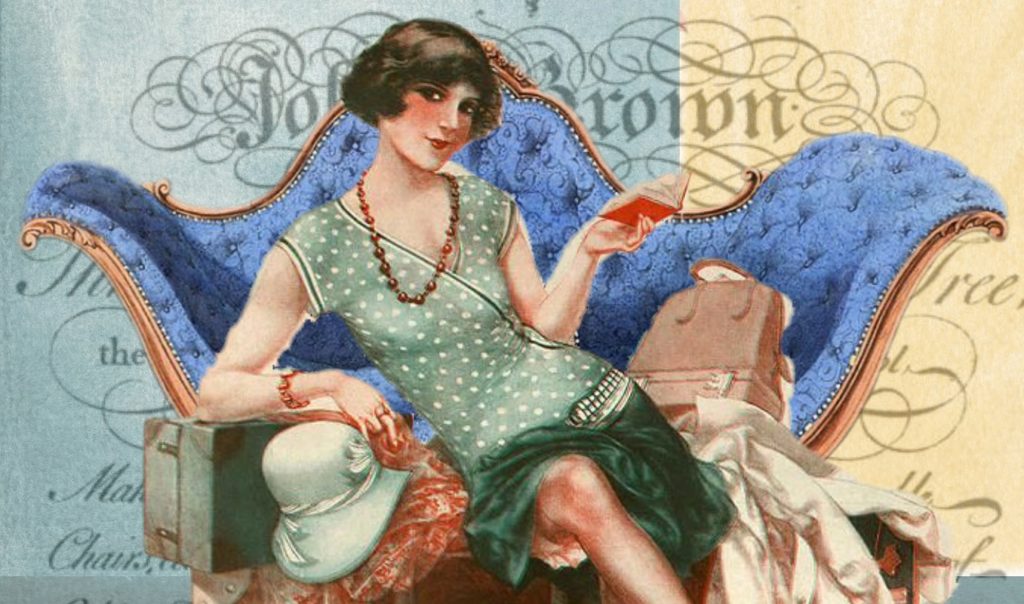Welcome to Christie’s Mysteries. This blog is an in-depth exploration of the world of Agatha Christie—not only her classic and lesser known stories but also contemporary happenings in the realm of true crime, early forensics, and the life of the Queen of Mystery herself. It is 2018, and one may question why one would start a blog devoted to Agatha Christie.
Despite the very recognizable anchorings of Christie’s stories in a particular epoch—an art deco salon with a stout Belgian dandy, a Middle Eastern archaeological dig with a stereotypical British patriarch, a quaint country village with an elderly spinster busybody too clever by half—there is something timeless about Christie’s work. Perhaps it is the deliberate laying out of a complicated mystery populated by interrelated and familiar suspects with a typical denouement gathering all the suspects in a single room for the solution of the mystery, tying up any and all loose ends. In the world of true crime, this type of resolution is elusive at best but more often completely unrealistic. But how comforting it is to read a story by Christie knowing that no matter how complex and insoluble the crime seems, by the end of the book it will all be wrapped up neatly.
Dawn of the Dame
Agatha Mary Clarissa Miller was born the third child to an English mother and American father in the seaside village of Torquay on September 15, 1890. Her nearest sibling, a brother, was 10 years her elder. Prior to Agatha’s birth, the family of 4 (with an older daughter to round them out) were vacationing in Torquay when Agatha’s father was summoned to New York for business. He provided his wife some money to rent furnished lodgings in Torquay for a year or two, given that the family ultimately wanted to settle down in America. Together with money she had from her father-in-law, Agatha’s mother Clarissa purchased a house called “Ashfield”—decidedly not a vacation rental but rather a home to raise a growing family in the picturesque resort town.

Torquay was long considered a health resort, where wealthy visitors would convalesce. In 1902, the first advertising campaign to attract healthy tourists to Torquay was launched. There was a steady influx until the start of World War I, during which time Torquay welcomed recovering servicemen.
The older Miller siblings attended boarding school, and Agatha had free reign over the house and grounds, including a full library. She had no formal education and taught herself to read at the age of 4. Agatha’s mother elected to home school her and educated the future writer herself with help from governesses and grandmothers. The Miller family was middle class and therefore staffed only female servants, as butlers and manservants were reserved for wealthier families. Accordingly, strong female figures were present in Agatha’s life from an early age, and Agatha (along with her siblings and mother) shared a belief in her mother’s own clairvoyance, stating of her mother years later, she was “always slightly at variance with reality.” When Agatha’s siblings were home from school, they would entertain her in ways that would subsequently inform her writing style and plotlines. Older sister Madge would play a game called “The Elder Sister,” in which she would portray a devious and deceptive older sister. Agatha’s brother Monty was athletic and a bit of a showman and took Agatha out on his boat around Torquay only once, impatient with her seasickness. Agatha’s father, although often absent during her childhood, produced amateur theatricals in Torquay, and Agatha was involved in her own amateur plays throughout her youth.
The House of Lurking Death
Although her upbringing was comfortable and may be called idyllic, Agatha experienced some early-life incidents that likely influenced her writing through her final novel. In her younger days, Agatha had a dream that an 18th-century musketeer called the “gunman” could replace members of her family without detection. In addition to this dark nightmare, several traumatic events occurred during Agatha’s formative years. Young Agatha witnessed one of her beloved pet dogs being run over by a horse-drawn carriage and on a separate occasion was chased off her neighbor’s property by man who threatened to boil her and her nanny alive. Agatha later said of the latter, “From that day to this I have never known so real a terror.” She was 4 years old.
When she was 11, Agatha’s father perished from pneumonia, and the family found itself in less than comfortable financial conditions. Agatha and her mother became closer and rented out Ashfield to spend a couple years in Paris, where Agatha became fluent in French and attended finishing school. When the two Miller women returned to England, Clarissa arranged for Agatha’s formal coming out in Cairo in 1907. This location and the field of archaeology would feature prominently in Agatha’s future life and writing, but her time in Egypt at this juncture was spent cavorting with military officers rather than examining antiquities. She found most of her suitors lacking until she met a handsome officer after her return to Torquay, Lieutenant Archibald Christie, who was anticipating entry into the Royal Flying Corps. A few days after Agatha and Archibald danced at a ball on January 2nd, 1912, Archie dashed up to Ashfield on his motor bike to officially begin their courtship.

The Secret Matrimony
The First Battle of the Marne from September 6th through 10th, 1914, staved off the advancement of German troops into France and notably introduced the use of trench warfare, a defining element of the Great War.
Although the couple intended to marry, Clarissa Miller insisted that the couple postpone their wedding until Archie earned an adequate salary to support himself and Agatha. Archie continued his military training for the next 18 months and traveled to France to fight in the battles of the Marne and Aisne in August 1914. During their time apart, Agatha served as a practical nurse for the Voluntary Aid Detachment at the Red Cross Hospital in Torquay. Shortly after Archie returned on leave, the two married in secret on December 24th, 1914, in a small ceremony witnessed by Archie’s stepfather and a total stranger. Two days later, on Boxing Day, Archie departed from London for another 6‑month separation.
Agatha Takes a Job
Beginning the next year, Agatha took a new assignment with the Voluntary Aid Department in the Dispensary at Castle Chambers. With extra time on her hands, Agatha began writing mystery fiction in addition to studying for the Society of Apothecaries examination. Agatha’s knowledge of poisons was largely informed by her time at the dispensary, and she would ultimately use poisoning as a means of dispatch in about half of her novels, including her first. Her older sister Madge had challenged Agatha to write a detective story, and she completed The Mysterious Affair at Styles during a 2-week stay at the Moorland Hotel on Dartmoor. The novel was turned down by the first three publishers to whom Agatha sent her manuscript. Agatha sent it to a fourth, The Bodley Head, but had not received a response by the time Archie returned to London later in 1918.

After the end of World War I, Agatha and Archie established their home in London, and Agatha gave birth to their first child, Rosalind, on August 5th, 1919, in her childhood home of Ashfield. Around this time, John Lane of The Bodley Head informed Agatha that his house would publish, and the world was introduced to Agatha Christie and Hercule Poirot in 1920.
